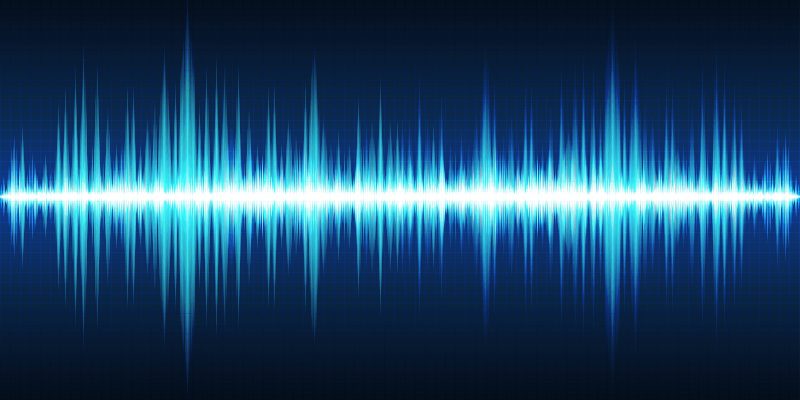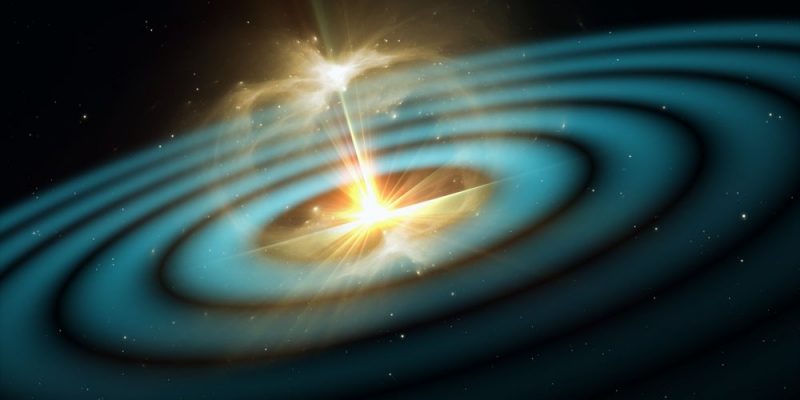We explain what a wave is and the types of waves that exist. Also, its parts and how this phenomenon can spread.

What is a wave?
In physics, the propagation of energy (and not mass) in space due to the disturbance of some of its physical properties, such as density, pressure, electric field or magnetic field, is known as a wave. This phenomenon It can occur in empty space or in one containing matter (air, water, land, etc.).
The waves are produced as consequence of oscillations and vibrations of matter which propagate in time as described by the wave theorythe branch of physics responsible for understanding this phenomenon, extremely common in the universe.
According to the origin of the waves or the nature of the medium through which they propagate, the effects of their appearance and their characteristics will depend. Thus, we can talk about light waves, sound waves, etc., each one with different physical properties and frequencies depending, among other things, on the medium in which they propagate and how much energy they transport.
Some waves, such as sound waves, cannot be transported in a vacuum; they require a physical medium. Others, such as electromagnetic waves, can do it perfectly and quickly: this is how artificial satellites operate that send information back to Earth using microwaves.
See also: Gravitational field
Wave types

We can classify waves according to different criteria.
Depending on the medium in which propagate:
- mechanical waves They require an elastic medium (liquid, gaseous or solid) and certain conditions of temperature and pressure, to propagate effectively. For example: sound waves that propagate through air or water.
- Electromagnetic waves They do not require a medium because they can propagate in a vacuum. For example: light.
- Gravitational waves Space-time alterations (recently confirmed by science).
According to its periodicity:
- Periodic waves They present repetitive cycles.
- Non-periodic waves They have irregular cycles.
According to your address:
- One-dimensional waves They spread across a single dimension in space.
- Two-dimensional waves They propagate through two dimensions and are often called superficial.
- Three-dimensional waves They propagate in three dimensions and are usually called spherical.
According to the movement of the medium:
- Longitudinal waves The particles of the medium move in the same direction in which the wave propagates.
- Transverse waves The particles vibrate perpendicular to the direction of wave propagation.
Parts of a wave
A wave is made up of the following parts:
- Crest It is the maximum point in the undulation.
- Valley It is the lowest point of a wave (the opposite of the crest).
- Period It is the time it takes for the wave to go from one crest to the next, that is, to repeat itself. It is represented by the letter T.
- Amplitude It represents the maximum variation of the displacement, the vertical distance between the crest and the midpoint of the wave. It is represented by the letter A.
- Frequency It is the number of times that the wave repeats in a given unit of time, which is why it is calculated according to the formula f = 1/T. It is represented by the letter f.
- Wavelength It is the distance between two consecutive crests of the undulation. It is represented by the symbol λ (lamda).
- Cycle It's the complete undulation, from start to finish.
How do waves propagate?

Waves usually need a material medium to propagate, although some can do so perfectly in a vacuum (depending on the nature of the wave).
For example, electromagnetic waves which constitute oscillations of the electric and magnetic fields and move at the speed of light, They do not require a material medium to propagate.
Instead, Mechanical waves require a physical medium to propagate such as water, a metal or air. For example, when we throw a stone into a pond, the stone causes a wave that propagates through the water.





